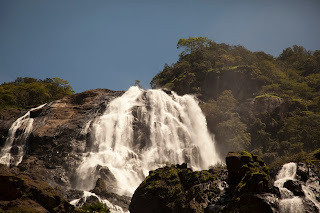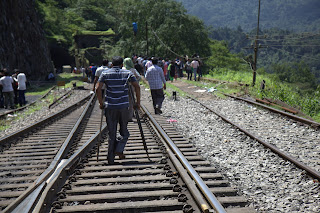Mysore
has a rich history with many pre-historic sites, monuments, forts, temples,
mosques and churches depicting the archaeological, architectural and heritage
value of the region. Mysore possesses excellent fauna and flora, rivers,
hillocks, lakes and a moderate climate.
Mysore
is the third largest city in Karnataka, India which served as the capital city
of Mysore Princely Kingdom (Kingdom of Mysore) for nearly 6 centuries, from 1399
until 1947. The Kingdom
of Mysore was ruled by the Wodeyar
dynasty. The cultural ambience
and achievements of Mysore earned it the sobriquet Cultural
Capital of Karnataka.
With
founding of Mysore dynasty in 1399 AD by Yaduraya, Mysore has seen 25 rulers.
Till emergence of Raja Wodeyar in 1578 AD, the Mysore Kingdom was a small
feudatory Kingdom under the Vijayanagar Empire. With the fall of Vijayanagar Empire
in 1565 AD, the Wodeyars inherited and perpetuated the traditions of
Vijayanagar Empire. Raja Wodeyar ascended the throne in 1610 AD, in Srirangapatna, the
erstwhile capital and inaugurated the Dasara Festivities which are still
celebrated with all grandeur. The most celebrated Kings after Raja Wodeyar who
contributed to the cultural heritage of Mysore are Ranadhira Kanthirava
Narasaraja Wodeyar (1638 -1659 AD), Chikka Devaraja Wodeyar (1673 -1704 AD),
Mummadi Krishnaraja Wodeyar (III) (1799 – 1868 AD), Nalvadi Krishnaraja Wodeyar
(IV) (1902 -1940 AD) and Jayachamarajendra Wodeyar from 1940 till the
establishment of the Republic of India.
Between
1761 and 1799, Hyder Ali along with his son Tippu Sultan ruled the State. With
the defeat of Tippu Sultan by the British at Srirangapatna in 1799, five years
old Prince Krishnaraja Wodeyar (III) was installed as the King of Mysore, on
the throne of his ancestors. Wodeyars contributed a great deal towards arts and
culture. Palaces, temples, the Mysore school of traditional painting, women’s
schools and colleges and music maestros bear witness to the liberal grants and
patronage of Mysore kings.
Mysore was the only highly industrialized and progressive native state in India in steel, silk, soaps and hydro-electricity. The kingdom was benefited from visionaries like Sir Mirza Ismail and Sir M. Visveswaraya who served under the Wodeyars as Dewans.
Mysore was the only highly industrialized and progressive native state in India in steel, silk, soaps and hydro-electricity. The kingdom was benefited from visionaries like Sir Mirza Ismail and Sir M. Visveswaraya who served under the Wodeyars as Dewans.
The
city is also known, throughout the world, for the pomp and gaiety with which
the traditional Dasara Festival is held here annually during the Navaratri. The
tourists would throng the city from all over the country and abroad in great
numbers to witness the Jamboo Savari(Elephants’ procession), the chief
attraction on the occasion in which decorated elephants walk the procession
route, majestically. The Maharaja used to sit in the howdah earlier.
The
tradition was maintained in full vigour for more than a decade even after the
country acquired independence. Now, under the changed political and
administrative conditions, Dasara is being organized in the city in a modified
form as Naada Habba, festival of the land. On the tenth day of the festival,
the grand procession of Goddess Chamudenshwari accompanied by umpteen tableaux
is the chief attraction.
Festivities
were first started by the Wodeyar King, Raja Wodeyar I (1578-1617 CE) in the
year 1610. The Mysore Palace is lit up on all the 10 days of Dasara. The
festivities begin with the Wodeyar royal couple performing a special puja to
Goddess Chamundeshwari in the Chamundi Temple located on the top of Chamundi
Hill at Mysore. This would be followed by a special durbar (royal assembly). It
was during the reign of Krishnaraja Wodeyar III in the year 1805, when the king
started the tradition of having a special durbar in the Mysore Palace during
Dasara, which was attended by members of the royal family, special invitees,
officials and the masses.
This tradition has been continued even now with the current scion of the Wodeyar family, Srikantadatta Narasimharaja Wodeyar holding a private durbar during Dasara. The ninth day of Dasara called as Mahanavami is also an auspicious day on which the royal sword is worshipped and is taken on a procession involving elephants, camels and horses.
On
Vijayadashami, the traditional Dasara procession (locally known as Jamboo
Savari) is held on the streets of Mysore city. The main attraction of this
procession is the idol of the Goddess Chamundeshwari which is placed in a
golden howdah on the top of a decorated elephant. This idol is worshipped by
the royal couple and other invitees before it is taken around in the
procession. Colourful tableaux, dance groups, music bands, armed forces,
folklores, the royal identities, decorated elephants, horses and camels form a
part of the procession which starts from the Mysore Palace and culminates at a
place called Bannimantap, where the Banni tree (Prosopis spicigera) is
worshipped.
According to a legend of the Mahabharata, Banni tree was used by the Pandavas to hide their arms during their one-year period of Agnatavasa (living life incognito). Before undertaking any warfare, the kings traditionally worshipped this tree to help them emerge victorious in the war. The Dasara festivities would culminate on the night of Vijayadashami with an event held in the grounds at Bannimantap called as Panjina Kavayithu (torch-light parade).
Another
major attraction during Dasara is the Dasara exhibition which is held in the
exhibition grounds opposite to the Mysore Palace. This exhibition starts during
Dasara and goes on till December. Various stalls which sell items like clothes,
plastic items, kitchenware, cosmetics and eatables are set up and they attract
a significant amount of people. A Game area containing attractions like
Malla Yudha or kusti and Ferris-wheel is also present to provide entertainment to the people. Various
Governmental agencies setup stalls to signify the achievements and projects
that they have undertaken.
Come join us for the celebration - heylos
heylos intends to cover the dasara for those who cant make it
So keep watching us, more to come
So keep watching us, more to come
cheers,
for the creative, art, culture and many more



































